There’s something deeply immersive about combining the flavours of an island with its everyday market culture. On Bali, you’ll find that food isn’t just fuel — it’s tradition, community, history and everyday life all rolled into one. Visiting a local market, chatting with stallholders, inhaling the scent of spices — these aren’t just extras to your holiday, they are the holiday.
Local markets give you an authentic peek into life off the usual tourist path: where fresh produce is unpacked at dawn, where children run between stalls, where the hum of bargaining blends with the scent of coconut, turmeric and char-grilled fish. At the same time the cuisine of Bali offers a delicious anchor: from ceremonial dishes to street-side snacks, from humble warungs (local eateries) to bustling night food bazaars. As one guide puts it: “Classes often held in traditional homes … start with a visit to local markets where participants discover fresh, exotic ingredients used in Balinese cuisine.” (I Love Bali)
This article will guide you through both realms: the food you must try, and the markets you must experience, with practical tips, cultural context, and a friendly voice along the way.
Part 1: The Heart of Balinese Cuisine
What Makes Balinese Food Special
While Bali shares many broad strokes of Indonesian cuisine, it has its own distinctive character: vibrant spices, ceremonial roots, seafood from the coast, rice as staple, and a strong interplay between culture, religion and food. One travel piece notes: “Balinese cuisine offers distinctive flavours … featuring ingredients including lemongrass, tamarind, turmeric, torch ginger and pandan leaves.” (The Times)
Key themes you’ll spot:
-
Spices & Herbs: The aroma of galangal, turmeric, ginger, chilies, coconut milk, torch ginger infuse many dishes. As one source says: “The markets of Bali … are lively and colourful places where the scents of spices and tropical fruits mix.” (I Love Bali)
-
Rice & Side Dishes: Rice remains the centre, whether white rice, yellow rice, rice cakes (ketupat). Then you’ll have a variety of meats, vegetables, sambals (chilli-based sauces) and sides.
-
Seafood & Coastal Influence: For coastal communities, fresh fish, shellfish, grilled seafood have an important role.
-
Ceremonial & Communal Dishes: Many dishes have roots in local ceremonies and communal meals — more than mere flavour, they carry meaning. For example, dishes like lawar, bebek betutu, sate lilit. (Co Development Group)
-
Local “Warung” Culture: Small family-run eateries (warungs) where recipes are passed down, where you sit on simple benches, eat with locals: “Warungs … are the best places to savour traditional dishes in an authentic setting.” (Co Development Group)
Must-Try Dishes to Look For
Here are some dishes I wholeheartedly recommend. Try to sample them in local settings (not just tourist menus) for full character.
-
Babi Guling (roast suckling pig) — Probably the most iconic Balinese dish for many visitors. Spiced, spit-roasted, the skin crisped to crackle, and served with rice and sides. Redditors frequently cite it:
“Babi guling (Suckling pig) – probably the most signature Balinese food.” (Reddit)
-
Bebek Betutu — Slow-cooked duck (or sometimes chicken) with rich Balinese spices, wrapped in banana leaf and roasted until the flavours melt into the meat. One recommendation: “Don’t miss dishes that define traditional Balinese cooking, such as bebek betutu …” (Co Development Group)
-
Sate Lilit — Minced fish or meat mixed with grated coconut and spices, wrapped around lemongrass or bamboo sticks and grilled. Smoky, fragrant. One guide notes it as a must-try in markets. (baligatetours.com)
-
Lawar — A mixture of minced meat, coconut, herbs, vegetables and spices – often eaten with babi guling. One Reddit thread:
“Lawar & Babi Kecap 👍” (Reddit)
-
Nasi Campur — Literally “mixed rice” – a plate of rice with a selection of sides (meat, veggies, sambal) so you taste a little of everything. Good for variety. (Co Development Group)
-
Vegetarian/Local-lighter options — e.g. Tipat Cantok: rice cakes with boiled vegetables and peanut sauce; one of the few vegetarian Balinese dishes. (Wikipedia)
-
Street snacks & sweets — Don’t skip desserts and snacks like dadar gulung (green coconut-pancake roll), klepon (sweet rice balls with palm sugar), tropical fruits. Reddit:
“And for sweets/snacks: Dadar Gulung – Green coconut pancakes; Klepon – Sticky rice balls with palm sugar inside.” (Reddit)
Where to Eat & How to Approach It
Since experience is as important as taste, here are some tips to make your culinary adventure more enjoyable:
-
Eat where the locals eat. Seek out warungs rather than fancy tourist restaurants. As one guide says: “Eat where the locals eat … warungs … serve recipes passed down through generations.” (Co Development Group)
-
Understand the spice level and ask for “tidak pedas” (not spicy) if needed. A helpful shorthand: “pedas = spicy” or “tidak pedas” to ask for mild. (Co Development Group)
-
Respect the culture and the setting. For example: wait for elders at the table, use your right hand if eating with hands, avoid waste. (Co Development Group)
-
Pair dishes with the right geography & setting. For seafood, choose coastal markets. For ceremonial/heritage dishes like babi guling or bebek betutu, smaller villages might give more authenticity than big resorts.
-
Balance your meals, especially if you’re not used to high spice or heavy dishes. Drink plenty of water, maybe ask for milder sauces, and pace yourself.
-
Ask for recommendations. Chat with your driver, local guide, warung staff. They often have insider suggestions. One Redditor suggested:
“Ask the Balinese locals where to find them.” (Reddit)
Typical Meal Flow Example
Here’s how you might plan a tasty meal day:
-
Start your morning at a local market (see later section) and perhaps pick up fresh fruit, snacks or sip coffee while you browse.
-
Lunch at a warung: maybe a plate of nasi campur, some satay lilit, a vegetable dish.
-
Mid-afternoon snack: try a sweet like dadar gulung or klepon, or fresh tropical fruit sold by a roadside vendor.
-
Evening: go to a night market or food street, sample grilled fish or babi guling, mingle with locals, soak in the ambience.
-
After dinner: perhaps walk through a craft market or take a stroll near the beach with dessert in hand.
Part 2: The Markets – Where the Heart Beats
Visiting local markets in Bali is not only about shopping, but about experiencing the island: the sights, sounds, smells, people, energy. They give fantastic context to the food you eat, and make your trip richer.
What to Expect at Balinese Markets
-
Early morning hustle: Many produce markets start early, as farmers bring fresh herbs, spices, vegetables, fish. One source: “Fishermen unloading their boats at dawn … the market connects you directly with Bali’s seafood culture.” (Bali Nirvana)
-
Spices and fresh produce galore: You’ll see sacks of turmeric, ginger, chilli, coconut oil, galangal; fruits like rambutan, mangosteen, durian. “The markets … where the scents of spices and tropical fruits mix.” (I Love Bali)
-
Street food stalls, especially in the evening/night markets: As the day cools, night markets start offering grilled meats, satays, sweets. For example, the popular night markets of Ubud, Sanur, Kuta. (baligatetours.com)
-
Crafts, textiles, souvenirs, local artisans: Many markets combine food with craft stalls: batik textiles, hand-woven baskets, silver jewellery. Good for souvenirs and local culture. (indonesiaimpressiontour.com)
-
A lively informal atmosphere: Expect bargaining, locals chatting, scooters lining up, a bit of noise, a bit of organised chaos. One Reddit insight mentions how busy some markets can feel:
“It is crowded, cramped and loud.” (Reddit)
Key Markets to Visit
Here are some of the best markets — each with its own character — that you should consider visiting in your Bali itinerary.
1. Badung Market, Denpasar
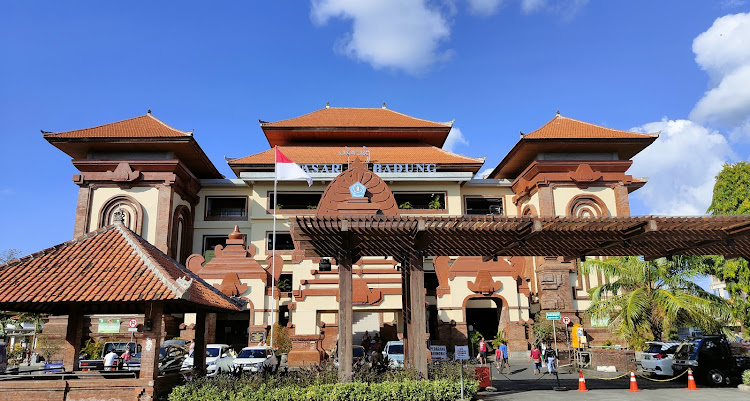

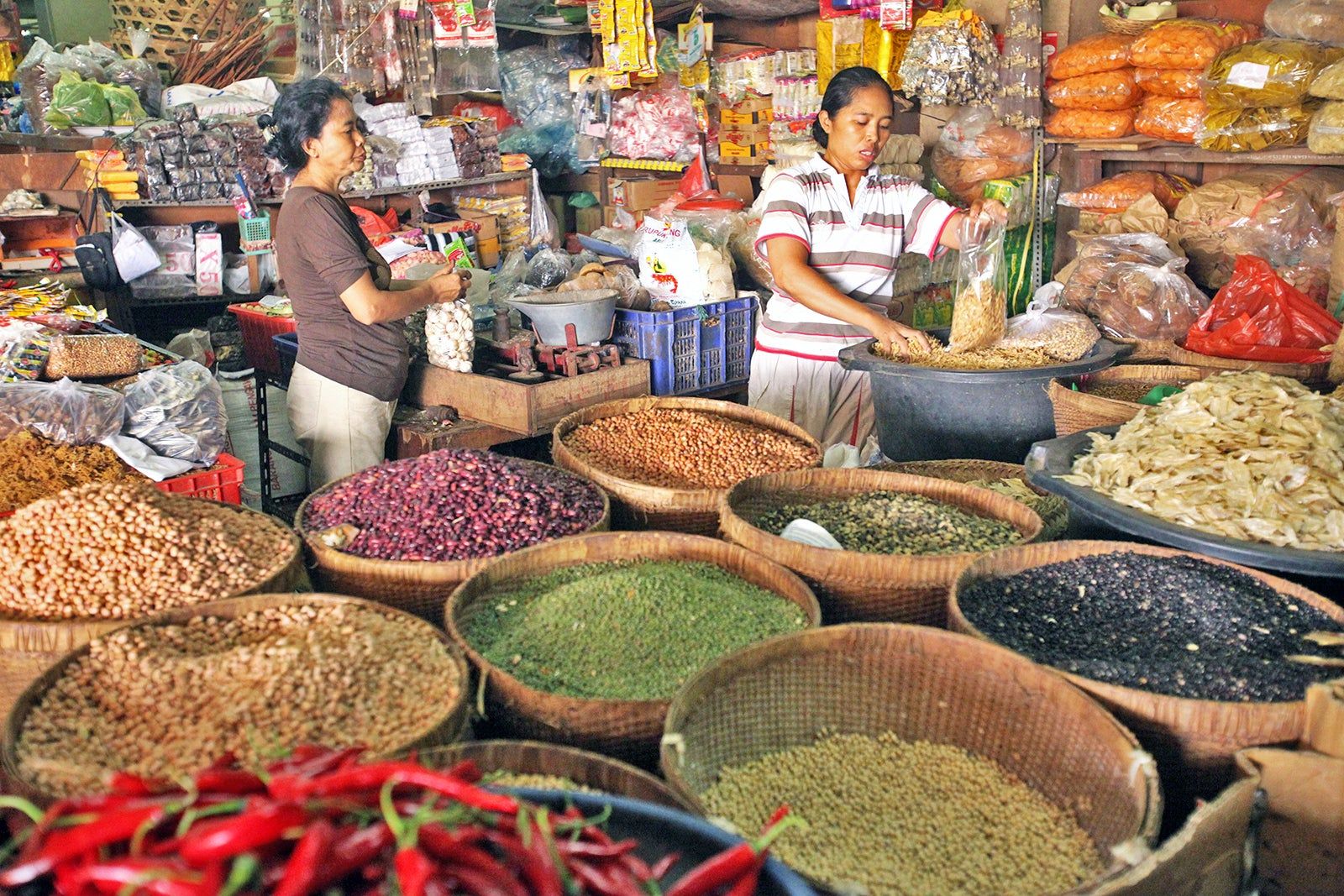



Located in Denpasar (Jl. Sulawesi, Dauh Puri Kangin), it is one of the largest traditional markets in Bali. (indonesiaimpressiontour.com)
-
Why visit: It’s a real local marketplace where Balinese shop for daily groceries, spices, produce, textiles.
-
Vibe: Authentic, energetic, a little chaotic; for some, this is part of the charm; for others, it may feel overwhelming (see Reddit feedback).
-
Tips: Visit early morning for the best produce and fewer crowds. Be prepared for strong smells (fish, spices). Bring cash.
-
Cautions: As one visitor noted:
“The touts can be extremely pushy … it is crowded, cramped and loud.” (Reddit)So go with a calm mindset, keep your valuables secure, and take your time.
2. Ubud Traditional Market, Ubud
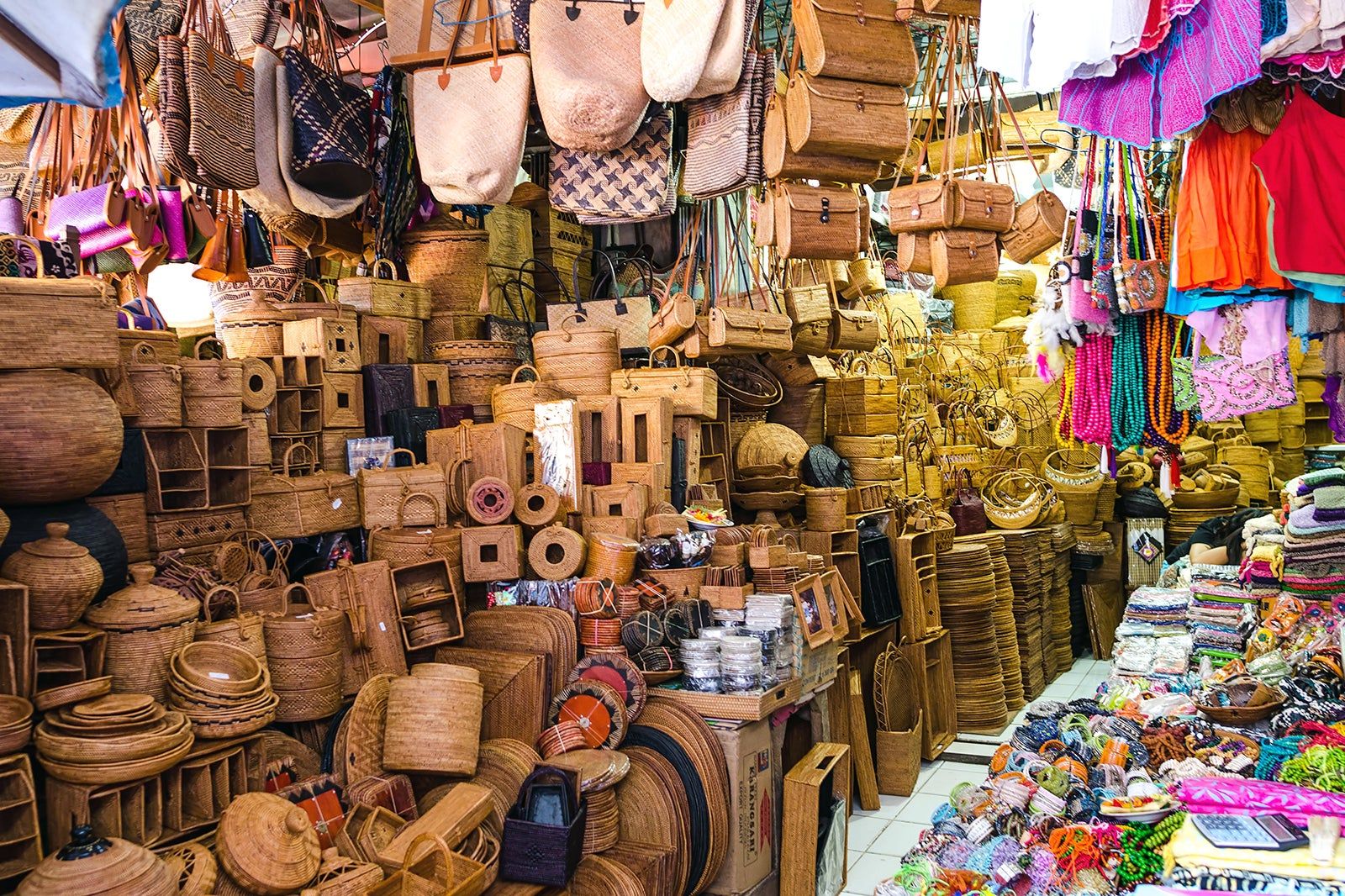



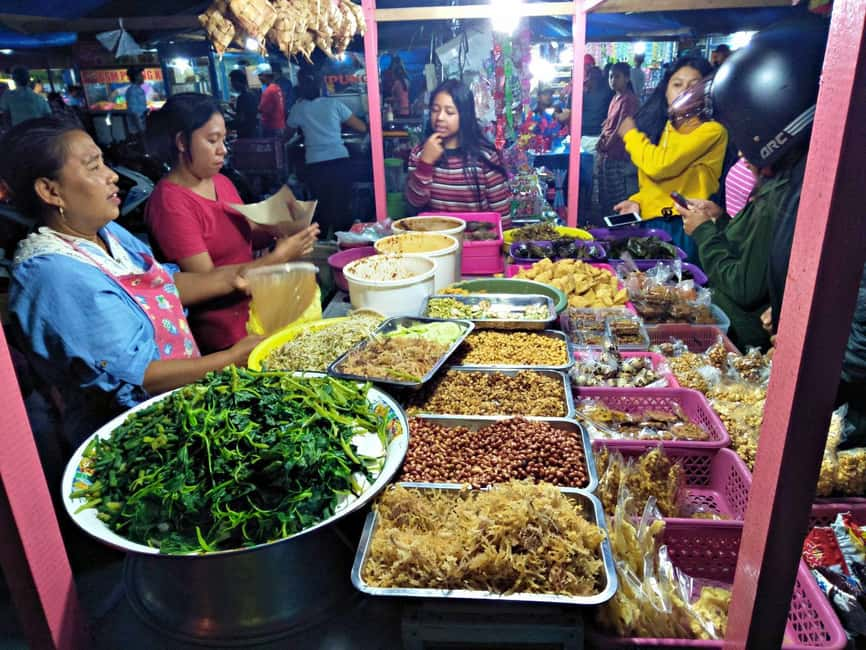
Address: Jl. Karna, Ubud, Bali. (indonesiaimpressiontour.com)
-
Why visit: This market offers a lovely mix of craft and food, in a more relaxed setting than ultra-busy markets. Great for textiles, artwork as well as local snacks.
-
Highlights: In the food section, you’ll find local snacks and small warungs inside or around the market area.
-
Tips: Arrive mid-morning when it’s open (~9:00). Good for combining shopping and food snacking. Bring bargaining skills if you’re buying textiles.
3. Gianyar Night Market (Pasar Senggol), Gianyar


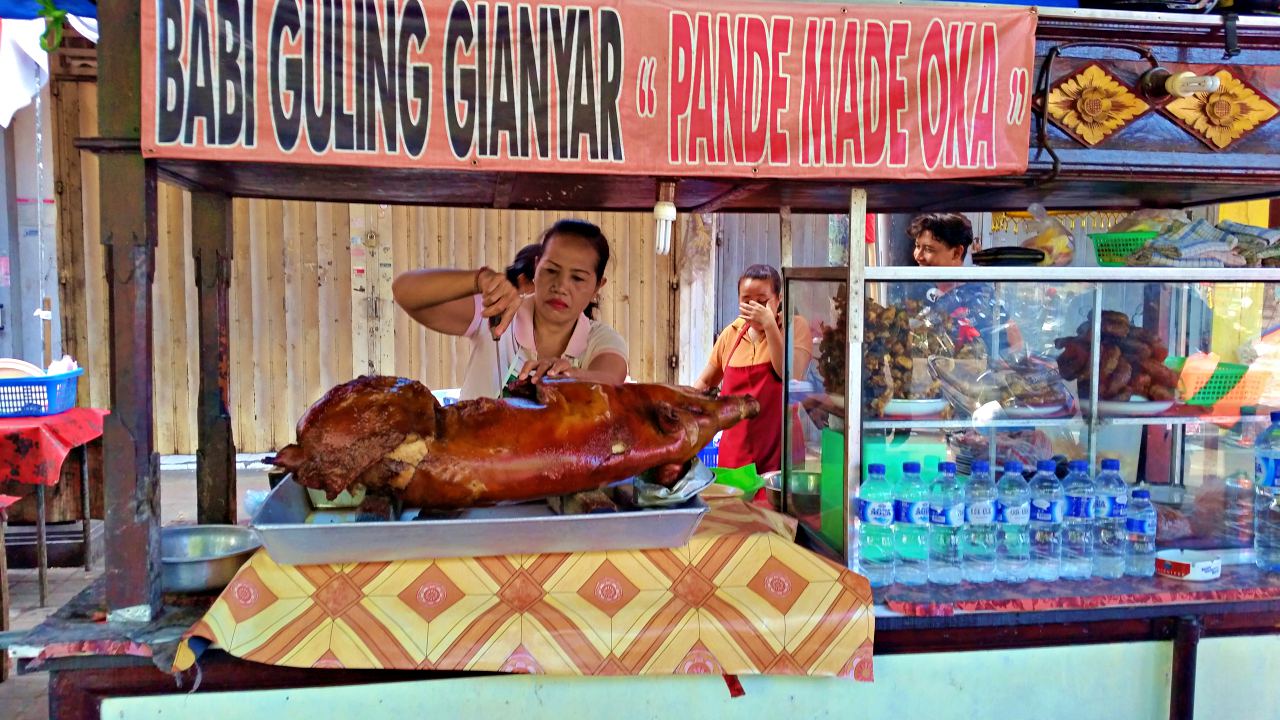



Address: Jl. Ngurah Rai-Gianyar No.38, Gianyar, Bali. Opening hours: ~3:00 pm – 10:00 pm daily. (indonesiaimpressiontour.com)
-
Why visit: One of the go-to spots for authentic Balinese street food — less touristy, more local. A great place to feast. (baligatetours.com)
-
What to try: Babi guling, various grilled satays, local sweets (jajan Bali).
-
Tips: Arrive just after the afternoon if possible so you can sample while it’s fresh, find a seat at one of the communal benches. Cash only likely.
-
Bonus: The atmosphere is vibrant with a shared sense of local community + food lovers.
4. Sindhu Night Market, Sanur



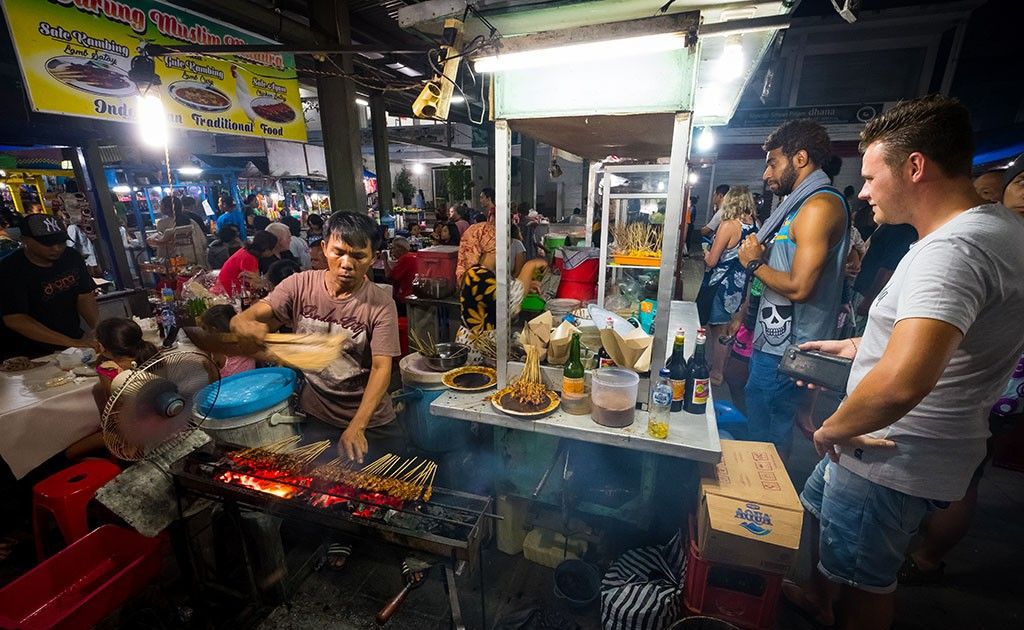


Address: Jl. Danau Tamblingan, Sanur, Bali 80228. Opening hours: ~5:00 pm – 10:00 pm daily. (indonesiaimpressiontour.com)
-
Why visit: Casual, local-friendly night market near the beach — great if you want to combine food and seaside stroll. (baligatetours.com)
-
What to expect: Street food, grilled seafood, local dishes, some craft stalls.
-
Tips: Visit on a weekday if you prefer fewer crowds; bring small change; try a variety of snacks rather than one big meal.
5. Kuta Night Market, Kuta
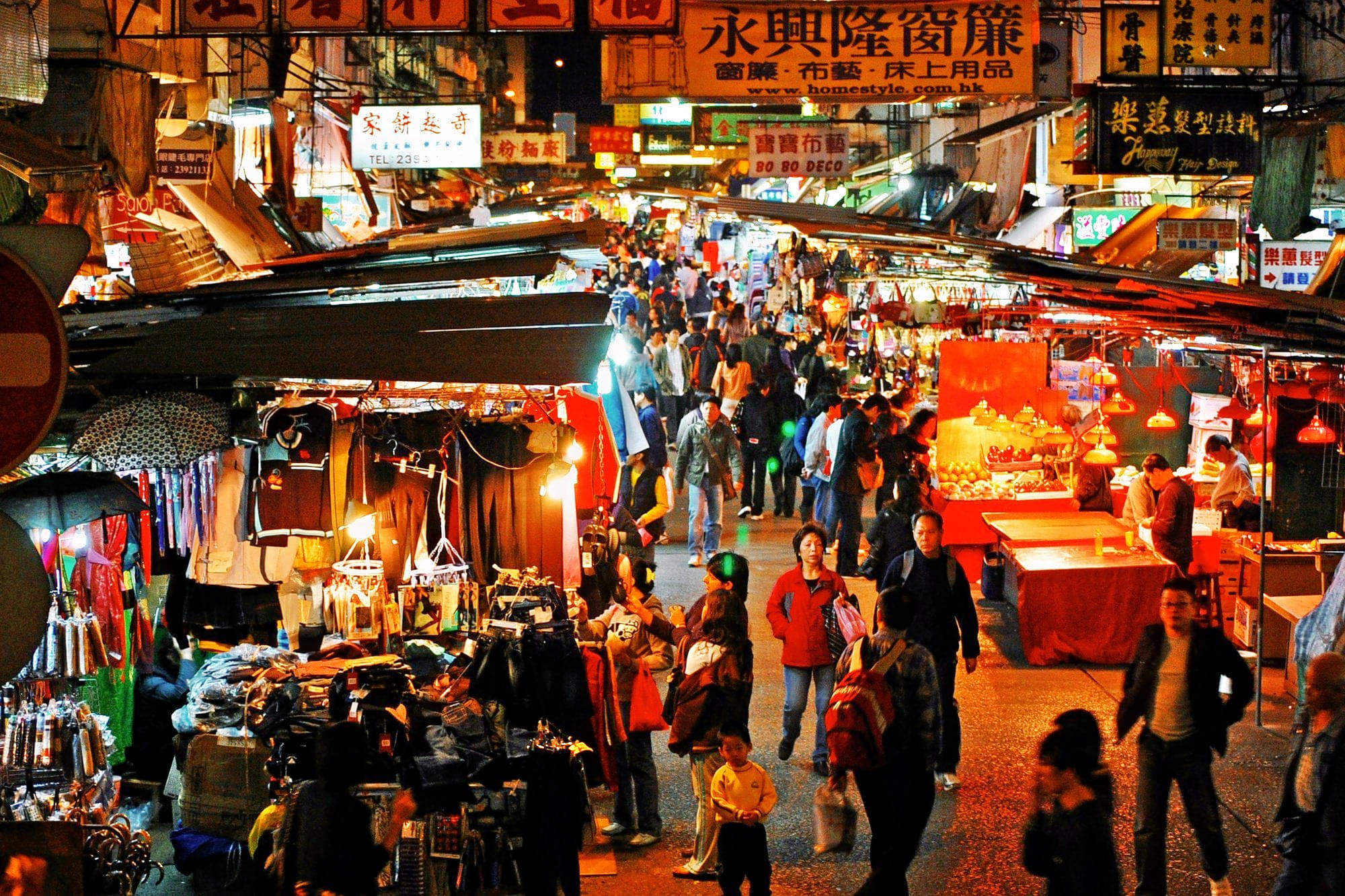

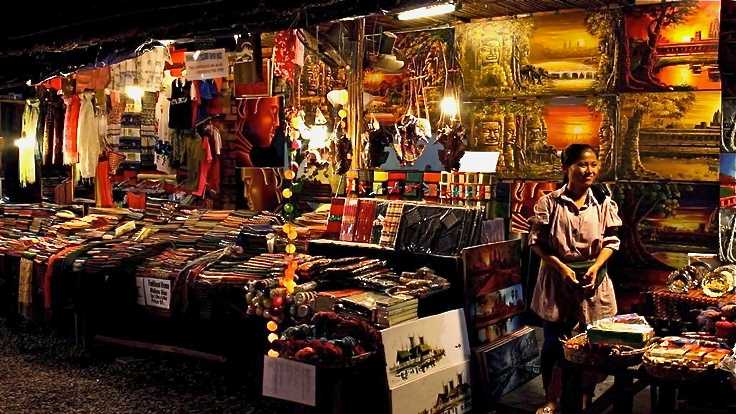


Address: Jalan Kartika Plaza area. (baligatetours.com)
-
Why visit: If you’re staying in or near Kuta, this is a convenient food & shopping stop in the evening.
-
What to try: Martabak manis (sweet pancake), grilled seafood, nasi goreng, cheap souvenirs. (baligatetours.com)
-
Tips: Because of the tourist presence, prices might be higher than in strictly local markets. Be ready for a mix of locals and visitors. Consider visiting early evening before it becomes very crowded.
6. Canggu Traditional Market & Night Market


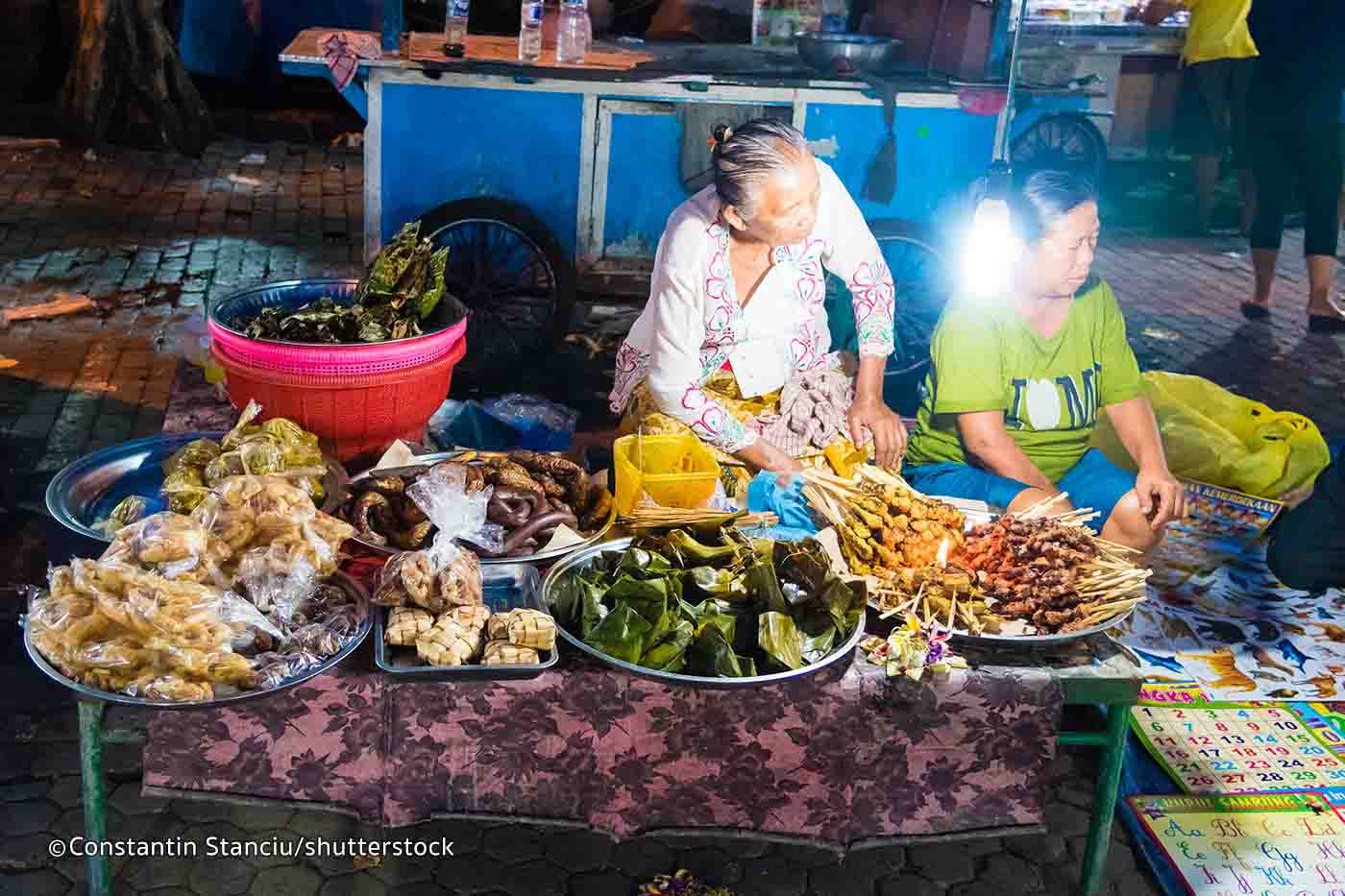


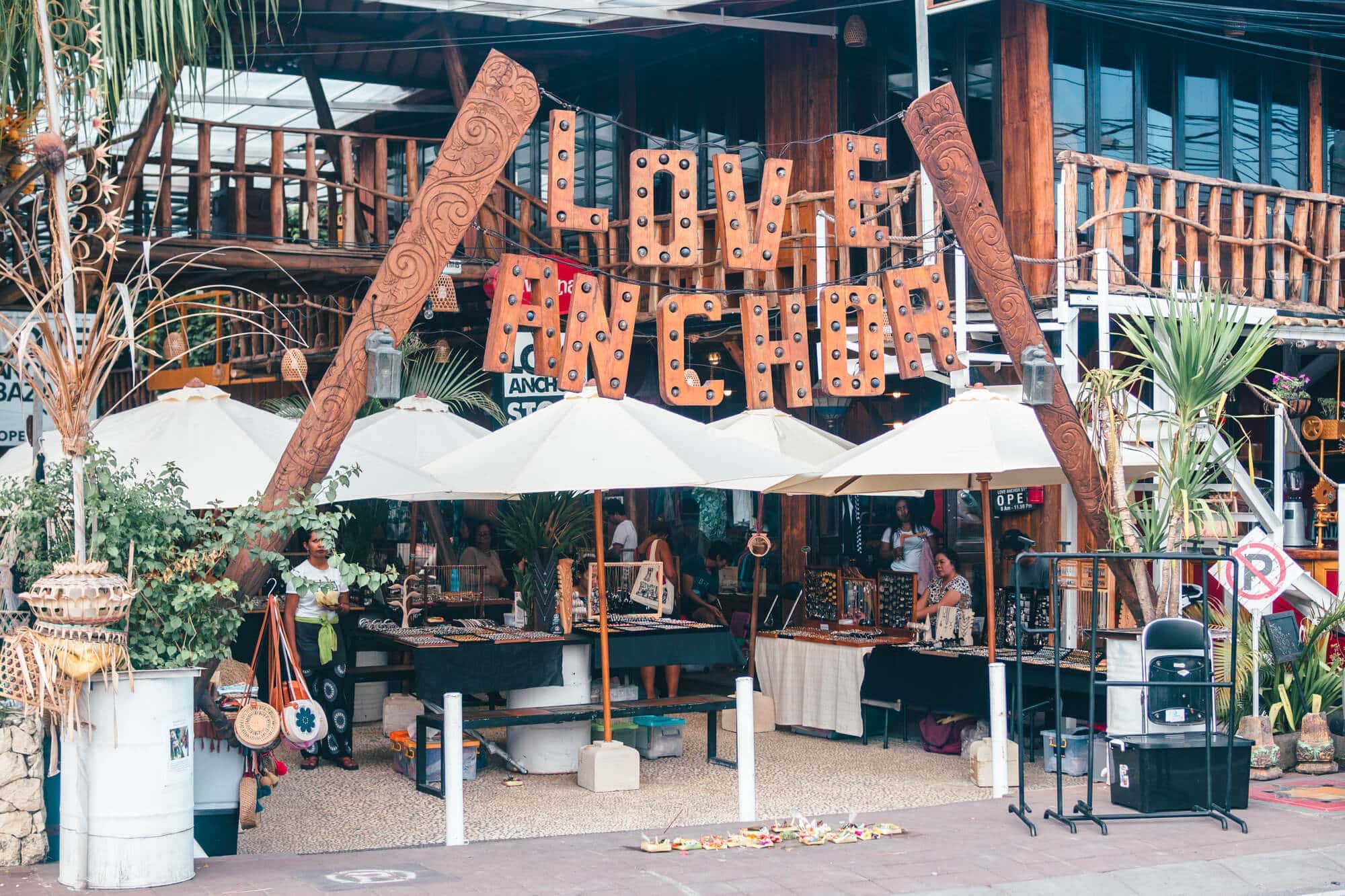
Address: Canggu area, near Echo Beach and wider region. (Bali Seminyak | Daily Bali News)
-
Why visit: Canggu gives a blend of traditional local market + trendy café/food-scene vibe. Good for travellers who like a mix of hip + local.
-
What to expect: Morning markets with fresh produce, occasionally organic/expat-oriented markets (e.g., Samadi Sunday Market) and night markets with local food stalls. (Honeycombers)
-
Tips: If you’re staying in Canggu area, this gives flexibility. Try to go off-peak to beat crowds.
How to Get the Most from Your Market Visit
Here are some friendly tips to make your market visits enjoyable and meaningful:
-
Go early (morning) or at optimal time (evening for night markets) — Early morning for fresh produce, less crowd. Evening/night for food and social atmosphere.
-
Bring cash and small denominations — Many stalls don’t take cards.
-
Wear comfortable shoes and be prepared for bustling aisles — Some markets are narrow, crowded, smells might be strong (especially fish markets).
-
Ask permission before photographing — Especially if people are working, handling produce, fish. A smile and “Boleh foto?” (“May I take a photo?”) goes a long way.
-
Engage with vendors — A friendly word or greeting in Indonesian (“Selamat pagi” = good morning) can open conversations, maybe tastings.
-
Try before you buy (where possible) — For snacks, produce. You’ll get a better sense of quality.
-
Respect local customs — Some smells, textures, sights may surprise you (e.g., fish heads, live crabs). That’s part of the authenticity.
-
Be mindful of hygiene and freshness — Especially at food stalls. One guide advises: “Opt for something hot and freshly cooked … this way you can witness the preparation process and savour the flavours at their peak.” (villacarissabali.com)
-
Don’t just buy — observe & soak it all in — The value of the market isn’t just in what you take home, but what you experience: the dialogue, the smells, the colours, the rhythm of local life.
Part 3: A Sample Food + Market Day Itinerary
To bring the above together, here is a suggested full-day itinerary (you can adapt it to your interests, pace, accommodation location) that combines market visits + cuisine experiences.
Morning
-
Rise early and head to a local produce market (e.g., Badung Market in Denpasar, or local equivalent near where you’re staying). Arrive around 7-8 am. Enjoy the bustle: fresh vegetables, fish, spices being unpacked.
-
Grab early breakfast or snack: maybe a simple nasi goreng or street-side kopi (coffee) and a local pastry.
-
After the market, wander to a nearby warung for a traditional lunch. Choose something like nasi campur or a plate with satay lilit + vegetables. Relax, soak in the spirit of Bali.
-
If you’re feeling curious, take a side walk to explore spice stalls or speak with a vendor about what the local ingredients are (e.g., turmeric root, torch ginger, kaffir lime leaves). This deepens your understanding of the food you’ll eat later.
Afternoon
-
After lunch, take a bit of rest (especially if you’ve eaten heartily) and maybe explore your surroundings: rice fields, village lanes, quiet cafés.
-
Mid-afternoon, find a spot for a lighter snack: perhaps some tropical fruit (mangosteen, rambutan, fresh coconut) from a roadside vendor, or a small sweet like dadar gulung.
-
Then, as evening approaches, prepare for the main food-market experience: choose a night market in your area (for example, if you’re near Sanur pick Sindhu Night Market; if in Ubud area perhaps Gianyar Night Market; if in Kuta/Canggu, the respective night market). Aim to arrive around 5-6 pm so you avoid peak crowd crush and get first pick of stalls.
Evening at the Night Market
-
Arrive at the market, wander the stalls, soak the sights & sounds: sizzling grills, satays turning over open flame, vendors calling out, locals chatting.
-
Decide what you’re most keen to try: maybe grilled fish or shellfish, a plate of babi guling (if you eat pork and it’s available), a vegetarian option like tipat cantok, or various satays.
-
Choose a communal bench or table, share small plates so you taste more. Take your time — a large part of enjoying Balinese cuisine is the slow, relaxed pace of eating and conversation.
-
After your food, wander the craft stalls if you like: pick up a handmade souvenir or simply enjoy the atmosphere.
-
Finish with a dessert or cooling drink: a fresh coconut, or iced herbal drink. Sit back, reflect on the day.
Late Evening
-
If you’re staying near the beach, you might take a stroll along the shoreline post-meal. The night air, the sea breeze, and the light from the stalls make for a restorative end.
-
If you’re staying in a bustling town like Kuta or Seminyak, you might wander a little through the night craft market or boutique stalls.
Optional Add-On: Cooking Class
Part 4: Culture, Etiquette & Things to Note
When you dive into food + markets in Bali, it’s helpful to keep a few cultural and practical notes in mind so your experience is smooth, respectful, and fully enjoyable.
Cultural Notes
-
Food and religion are intertwined. Bali is predominantly Hindu, and many festivals, rituals, village gatherings revolve around food offerings, communal meals and shared cooking. Understanding this adds depth to your meal.
-
Dining modestly & respectfully. As noted earlier: use right hand if eating by hand, don’t waste food, wait if you’re at a communal table for the host or elder to start. (Co Development Group)
-
Bargaining is expected at markets (especially craft stalls), but done politely. Start lower, smile, treat it as light conversation rather than aggressive negotiation.
-
Photography and people. If you photograph vendors, ask first. A simple “boleh foto?” (may I take a photo?) works.
-
Be open-minded. Some smells, tastes or sights may be unfamiliar — that’s part of the journey.
Practical Tips
-
Bring/rely on cash. Many market stalls (food and craft) don’t accept cards.
-
Keep small change. Makes buying snacks or small items easier.
-
Watch your belongings. Markets get busy; keep your purse/backpack front-facing, use zipped pockets.
-
Check food freshness/hygiene. While exploring street-food culture, some stalls may be less hygienic. One Reddit user cautioned:
“Many of the street food market vendors are not up to the western standard in terms of hygienic/food safety … they handle food and money with the same bare hands.” (Reddit)That doesn’t mean you avoid all street food — just be selective: choose stalls where food is freshly cooked, many customers are present, the vendor seems organised. -
Ask about spice level. If you’re not used to very spicy food, ask for “tidak pedas” (not spicy) or “sedikit pedas” (a little spicy).
-
Hydrate. With spicy food and tropical climate, keep water handy.
-
Early vs late. For fresh produce markets: morning. For food night markets: evening.
-
Respect food preferences/diet. Some dishes (like babi guling) include pork, which some travellers may avoid. Vegetarian options are fewer but available (e.g., tipat cantok).
-
Transport & location. Markets may be in busy areas; traveling by scooter/taxi/double-check your pick-up after visiting.
-
Plan for some downtime. After big meals/market wanderings, a rest or slow walk helps you digest and enjoy the rest of the evening.
Part 5: Beyond the Highlights – Deeper Flavour & Local Life
To really deepen your experience of Balinese cuisine and markets, consider venturing a little further off the well-trodden tourist path. Here are some suggestions and ideas.
Explore Village Markets & Local Villages
While the bigger markets in Denpasar, Ubud or Sanur are excellent, smaller village markets give you closer access to day-to-day island life (less tourist interventions, more authenticity). Explore markets in villages around Gianyar, Karangasem, Klungkung. They may require extra travel but offer richer experience.
Seasonal & Rare Ingredients
Cooking with Locals or in a Home Setting
Supporting Small-Scale Producers & Sustainability
Markets are also a great place to support local producers. When you buy from local farmers, spice vendors, craft makers, you’re contributing. If you see stalls with organic produce, village-grown herbs, local traditional dishes, consider making a purchase even if small, and chat with them about their process. One source mentions markets: “Organic produce, local snacks, handmade crafts, jewelry, and sustainable fashion.” (villacarissabali.com)
Embrace the Journey Over the Destination
Rather than rushing from one must-eat list to another, allow for slow wandering. Stop to chat with a vendor about a spice you don’t recognise. Taste a fruit you’ve never seen. Ask what dish they suggest. Sit in a little warung, watch locals come in with their families. The most memorable meals often aren’t the ones in flashy restaurants but the ones where you feel the local rhythm.
Part 6: Sample Narrative – A Food & Market Story
Here’s a mini narrative to help you visualise how a day might feel in Bali, wandering the markets and tasting the cuisine.
It’s early morning in Denpasar. You step off your scooter (or taxi) into the cool dawn, and the sprawling complex of Badung Market is already alive. The smell of freshly chopped chilies, turmeric and ginger fills the air. A vendor sits behind a big pile of galangal root, another arranges fresh coconuts. You walk slowly, taking it in. Colourful sacks of rice, baskets of bright green vegetables, fish laid on ice.
You pause at a stall where women are balancing trays of tropical fruit — mangosteen, rambutan, star-fruit. You pick a handful of rambutans, chat with the vendor (smile, “bisa coba?” = can try?). He offers a taste, you pay and move on.
Later, you wander to a warung around midday. The warung is simple: wooden benches, a few fans whirring. You order nasi campur: a mound of white rice, a little piece of bebek betutu, a scoop of lawar, some sambal, some vegetables on the side. You savour each bite, noticing how the spices tickle your tongue, how the coconut and turmeric in the lawar contrast with the crisp duck skin.
In the afternoon you take a slow stroll to Canggu, stopping at a small local market near the rice paddies. You sip a fresh coconut, lean on the scooter while you watch locals arrive back from work, pick up vegetables for dinner. You buy a few leaves of pandan for your own use later (perhaps you’ll try to cook something when you return home).
As evening sets in, you head to Sindhu Night Market in Sanur. The sky melts from blue to orange, the stalls light up, smoke rises from grilling satays and fish. You pick a seat at a communal table, order a plate of grilled fish marinated in Balinese seasoning, some sate lilit, and a side of tipat cantok (because you feel like something lighter). The food arrives, steaming, fragrant. You dig in, feeling the warmth of the meal, the gentle buzz of conversation around you, children running between stalls, families arriving.
Afterwards, you wander the craft stalls: handmade jewellery, handwoven baskets, little wooden carvings. You pick a small souvenir — maybe a small wayang puppet for a friend back home — and barter a little, always with a smile. Then you stroll to the beach, drink in hand, and watch the gentle waves and the glowing market lights behind you. You reflect: you didn’t just eat in Bali today — you lived in it for a day.
Part 7: Putting It into Your Travel Plan
Here are some suggestions to integrate this experience into your Bali trip:
-
Allocate at least 1 full day to food + market exploration (if possible 2).
-
Mix zones: stay a night or two near a vibrant market (e.g., Sanur, Ubud, Denpasar) so you can go morning or evening easily.
-
Schedule rest/slow times: market mornings can be intense, so plan lighter activity for the afternoon.
-
Transport: Use scooter/taxi/local driver to get to markets early/late. Ask your accommodation for advice.
-
Food-safe mindset: Especially if you’re staying longer, be mindful of hygiene, spice level, hydration.
-
Shopping vs eating: Decide what your primary interest is (food? craft? both?) and choose markets accordingly.
-
Bring re-usable bag or small back-pack: For any purchases of produce or crafts (depending if you’re taking things home).
-
Respect local culture: Dress modestly if visiting village markets, be mindful of temple nearby, listen to vendors.
-
Allow flexibility: You might discover a market not listed in the guide; some of the best experiences happen when you wander and pick something unexpectedly good.
Part 8: Final Thoughts
Exploring Bali through its cuisine and local markets is one of the richest ways to connect with the island. It’s not about ticking off a list of “famous restaurants” (though those can be fun) but about being present, observing daily life, tasting what’s around you, and respecting the culture.
Here are a few take-away suggestions:
-
Be curious. Ask the vendor what a spice is, try a fruit you don’t recognise, ask how people eat this dish in their family.
-
Slow down. Enjoy the market ambience, pick a warung where locals are eating, watch how they order, what they pick.
-
Diversify. Try heavy, hearty dishes (bebek betutu, babi guling) and lighter ones (tipat cantok, vegetable satay) so your palate stays fresh.
-
Support local. Purchases in markets, small warungs, local producers help the community.
-
Document your experience. A photo of a spice stall, a note of the dish you liked, a chat with a vendor — these become memories more than just the meal.
-
Remember: Travel is about more than seeing — it’s about sensing, tasting, connecting. Markets and food do that brilliantly.
